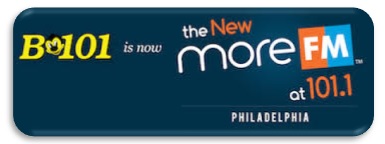So here’s the dilemma – you have a great brand that’s been around a long time and everyone knows it.
And that’s the problem because perhaps it stands for something that’s too old to thrive in this pop culture-driven environment.
There is no shortage of brands going through this process as I write this post, but the solutions are numerous and not especially obvious. Which one is right, of course, is in the eye of the beholder but also a function of execution and strategy.
So that’s why when I saw mega-efforts to reposition and from two bigger than life brands late last year, it caught my eye.
First, AARP. Yes, like the NAACP, the American Association of Retired Persons probably wishes it had a different name. That’s because a large percentage of their membership is anything but retired as the American populace has become more youthful and vibrant over the past several decades.
 When you turn 50 (actually 49), it starts – AARP is relentless in trying to get you to join. But if you have a shred of vanity (and, of course, I have much more than a shred), you might hold off on joining AARP simply because of the symbolism of it all. The brand just screams old, in spite of the discounts and other benefits of membership.
When you turn 50 (actually 49), it starts – AARP is relentless in trying to get you to join. But if you have a shred of vanity (and, of course, I have much more than a shred), you might hold off on joining AARP simply because of the symbolism of it all. The brand just screams old, in spite of the discounts and other benefits of membership.
To counteract that, AARP didn’t even bother to pay for a celebrity spokesperson. Instead, they put together a mock cover of their magazine featuring one Brad Pitt in the hope that someone this famous and youthful turning 50 might help change minds and perceptions about what the organization is really about.
They then tweeted out a mock Brad Pitt AARP card which is attention-getting and even somewhat shocking – and that’s the point. In order to reset minds, hearts, and feelings about a well-entrenched brand, you sometimes have to go to extremes.
And then there’s Philadelphia’s B101, an amazing radio station owned by the world famous Jerry Lee. B101’s move to More FM was well covered by the industry trades, but it serves as an important story about taking risks at a time when perceptions may be set in stone.
 In some ways, B101’s mega-promotion and marketing efforts unwittingly contributed to research findings that very likely showed that their image as an AC station was so entrenched, that offering up “The New” language – even in force – would not be enough to change perceptions. The little “Bee” character was ubiquitous, showing up in research studies far outside of the station’s area of formatic influence.
In some ways, B101’s mega-promotion and marketing efforts unwittingly contributed to research findings that very likely showed that their image as an AC station was so entrenched, that offering up “The New” language – even in force – would not be enough to change perceptions. The little “Bee” character was ubiquitous, showing up in research studies far outside of the station’s area of formatic influence.
As former Arbitron executive Pierre Bouvard often counseled while an analyst at Coleman Research: “Perceptions are like glaciers – slow to form and slow to melt.”
And so More FM offers a new lease on adult contemporary life for WBEB – even though much of the radio station (personalities, music) remains little changed. It is a testament to understanding your market, your position, and your brand.
And all industry eyes will be watching Philadelphia ratings in the post-Christmas music reality that has become More FM.
In the meantime, I’m still not joining AARP.
- For Radio, Will It Be Christmas In April (And Hopefully, May)? - April 21, 2025
- Media And Technology In 2025: Believe It Or Not! - April 18, 2025
- In Radio, You Just Never Know - April 17, 2025




Leave a Reply